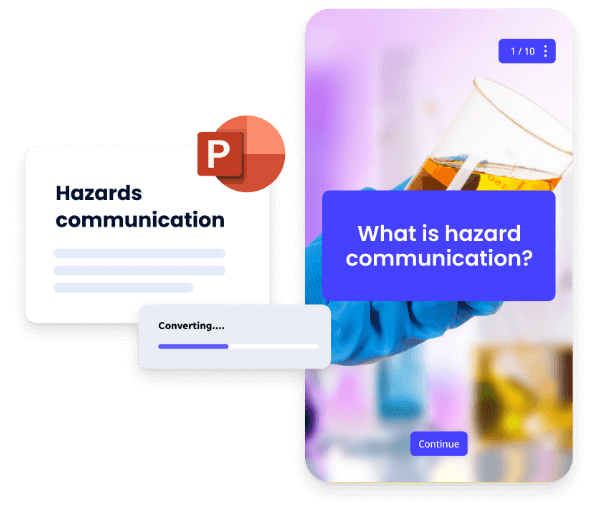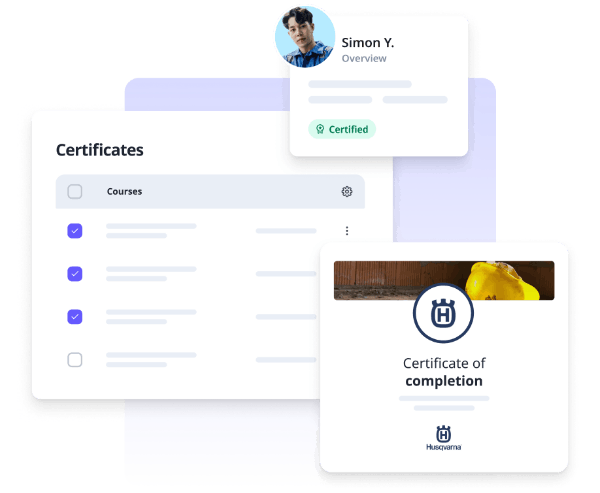All about employee management: definition, best practices, & tools

For a business to fully realize its goals, everyone must actively work toward its success. Every member has a significant role to play. So when employees don’t feel engaged with their work, this creates a huge problem not only for the company but also for managers. The solution? Sustainable employee management practices.
What is employee management?
As the name suggests, employee management is all about making sure employees do their job properly and contribute to the company’s growth. It ranges from monitoring their performance, investing in skill building, forming healthy relationships, and drafting performance improvement plans when needed.

When employee management is done effectively, you can expect higher employee productivity, satisfaction, and retention rates. Simply, it’s a win-win case for all. Let’s learn all about sustainable practices for employee management today so you can create a better workplace for tomorrow.
Best practices to manage employees
Besides earning a profit, employee productivity is important as it promotes a healthy work environment. It also leads to better collaboration and exceptional customer service.
As per Gallup, a top global analytics firm for human resources, U.S. employee engagement stagnated in 2023. Translated into figures, this meant a national loss of about $1.9 trillion in productivity. And when employees feel detached from their work, they’re more likely to resign in the coming months.
To prevent this, you must learn how to cultivate positive employee experience strategies. Here, we’ve curated a list of best practices to guide you in managing your employees.
Prioritize open communication
As the manager, you have to connect with your team first and foremost. By keeping your communication lines open, you make them feel that you genuinely care for them as a person and not just because they bring in money for the company.

Organizational research reveals that managers who initiate substantial conversations individually with their team members each week cultivate high-performance relationships. Your employees must feel seen and heard to perform their jobs successfully.
Sign up with SC Training today to learn how to effectively manage and upskill your team.
Promote a healthy work environment
There must be a healthy balance between work and life. Just because your employees aren’t complaining about feeling overworked, doesn’t mean they aren’t struggling to find the right balance.

This employee management system must be strongly reinforced when things get hectic. Due to the piling deadlines, your team will feel pressured to produce better outcomes. But remember, everyone has a breaking point.
To prevent employee burnout, it’s your job to encourage work-life balance. Remind them to take short breaks throughout the day or consider using up their annual leaves if things get too overwhelming. But if you’re struggling to implement this as your company follows a remote setup, look into this free work-life balance course by SC Training to get you started.
Give feedback consistently
Don’t keep your team in the dark. Studies have proven that receiving feedback on the job positively affects employee engagement. Let your team know how they’re doing — good or bad, it will motivate them to perform better as feedback gives employees a greater sense of purpose.

Note that consistency is key. You can practice this by scheduling weekly feedback sessions with each of your members so you can better assess their individual experiences. If some of them repeatedly stand out, recognize their contributions. You can either give out bonuses, initiate lunch outs, or simply reward them with a shoutout.
Lead by example
For employees to respect you, learn how to walk your talk. Prove this when promoting work-life balance. Be sure not to message your team after work hours or on the weekends. Respect their time off, just as they respect yours. And when making promises, remember to follow through so you don’t break their trust. It fosters loyalty and strengthens the overall team dynamic.

Great leaders are those who know how to empathize with their team. While our circumstances may all be different, it doesn’t hurt to put yourself in their shoes. This is so you can better understand where your members are coming from and make any necessary adjustments.
Stop micromanaging in the workplace
With everything that’s been said, remember not to overdo your employee management system. Micromanagement happens when you become too controlling and fixate on the smallest things your employees do. While it’s your job to guide them so your team performs well, don’t fall into the trap of micromanaging your team.

In a 2023 poll, 73% of employees voiced how micromanagement is the “biggest transgression” in the workplace. Not only is it annoying, but it disempowers your team too. They won’t be able to carry out their tasks efficiently if everything requires your approval. That’s why it’s essential to keep the following tips in mind to avoid micromanaging in the workplace:
- Build trust among your team. This is the key to high-performance relationships. Learn how to delegate and trust that they will deliver quality work. If you’re unsatisfied with their output, you can always offer constructive feedback during your scheduled one-on-one meetings.
- Establish clear expectations. Doing so builds accountability and healthy boundaries among your team. Offer clarity by giving detailed instructions so they know what you’re expecting. And don’t forget to share your thoughts during feedback sessions!
- Foster continuous learning. Explore new heights without the fear of failure. Invest in employee development programs to upskill your team. Treat setbacks as learning opportunities to do better next time. Remind your employees that perfection isn’t what you’re all aiming for. What matters is that you all get the job done.
Use employee management software
To maximize all these workforce management solutions, you’ll need tools to help you out. These admin tasks are essential for the day-to-day, though they’re undoubtedly time-consuming. But with the right employee management software, you can automate most of your tasks.

One of the benefits of living in the digital world is that we no longer have to do everything by hand. AI is our best friend! Equipped with the right employee management tools, you can save time, manpower, and money while keeping employee engagement high.
Here are three aspects to consider when choosing employee management software:
- Accessibility. Find a tool with a centralized database so you can view all the valuable information in one place. For tracking employee performance, make sure it offers your team simple and easy access for transparency and efficiency.
- Integration. You don’t want to start from scratch. Choose employee management tools that allow you to integrate existing apps or documents used by your team. This minimizes the learning curve and streamlines the workflow process.
- Security. Cybersecurity risks are widespread nowadays. Select the tool that offers top-notch security so you don’t have to worry about data being stolen or leaked.
5 Employee management tools
Discover the best employee management tools to help you maximize your team's productivity today. We've done all the research just for you.
1. SC Training
It’s no secret that SC Training is an employee management tool that’s well-loved by many. From performance tracking to analytics and course creation, this platform offers flexible customization. Whether on a computer or mobile phone, you can easily monitor interactions and assess employees’ knowledge of the job with its easy-to-navigate interface.

And if you’re not too familiar with the latest trends in technology, don’t worry as SC Training allows you to convert paper documents into digital content in seconds. No computer is required! Transferring information has never been easier. Because it’s built for mobile devices, you can streamline your workflow and freely manage your team whenever and wherever you are.

Keep your team engaged by rewarding outstanding members with Achievements and Completion Certificates. And if you want to provide a space where employees can regularly express their concerns, you can use the Surveys feature and customize it however you like.

2. Slack
Slack is an all-in-one platform that facilitates smooth communication between teams. The spaces are organized into channels that can be freely customized. So whether you’re addressing the whole team or an individual member, this platform can meet your needs! It’s easy to send messages, share files, and sync projects across multiple channels.
Besides starting conversations through chat, the Huddle feature allows your team to communicate over video and audio. Equipped with colorful backgrounds and emoji reactions, everyone can express themselves better in the virtual space. All images, documents, or links shared are automatically saved once the huddle ends, so you can quickly reference them for later.
3. Lattice
Powered by AI, Lattice simplifies the HR process to make way for maximum productivity. Seamlessly incorporate performance management with its built-in Objectives and Key Results (OKRs), and collective goals. Because of its straightforward interface, initiating communication and collaboration has never been easier.
What’s also great about this is that you can import feedback from multiple sources like Jira, Microsoft Teams, and Slack. Monitor employee progress without the need to switch between workflow stations. Overall, this platform is ideal for those frequently collaborating in remote setups.
4. BambooHR
BambooHR is a comprehensive tool that allows you to manage your employees’ life cycles in one place. Effortlessly track your team’s working hours, run payroll, and handle their benefits enrollment. Its centralized database offers 49 built-in automated reports so you can stay proactive in managing your team.
Faced with a sudden spike in recruitment? No worries, this can handle it. You can hire and onboard fresh talent with its built-in applicant tracking system (ATS). So if you’re searching for a fuss-free way to optimize your processes, this platform’s got your back.
5. Workday
With Workday, it doesn’t matter if your team members are scattered across the globe — manage all things HR, finance, and planning seamlessly. Powered by AI, this employee management software is highly flexible as it’s founded on a cloud-native system that gathers all your data in one place.
Its dashboard distributes the analytics where needed so you can make the right decisions anytime. Track talent management, benefit plans, recruitment, and payroll in a single space. Dare to take risks as this tool is resilient enough to meet your growing needs.
Level up your employee management with the leading performance and training tool. Join SC Training today. No credit card required.
Author
Bea Maureen Cayone
Bea Maureen Cayone is a content writer for EdApp, an eLearning platform that delivers advanced solutions for companies to seamlessly train their teams. Beyond the workplace, she enjoys catching up on her never-ending reading list, playing the piano, and spending time with her dogs.
